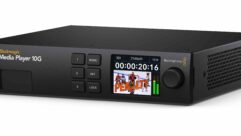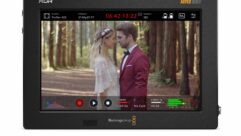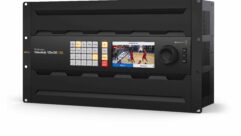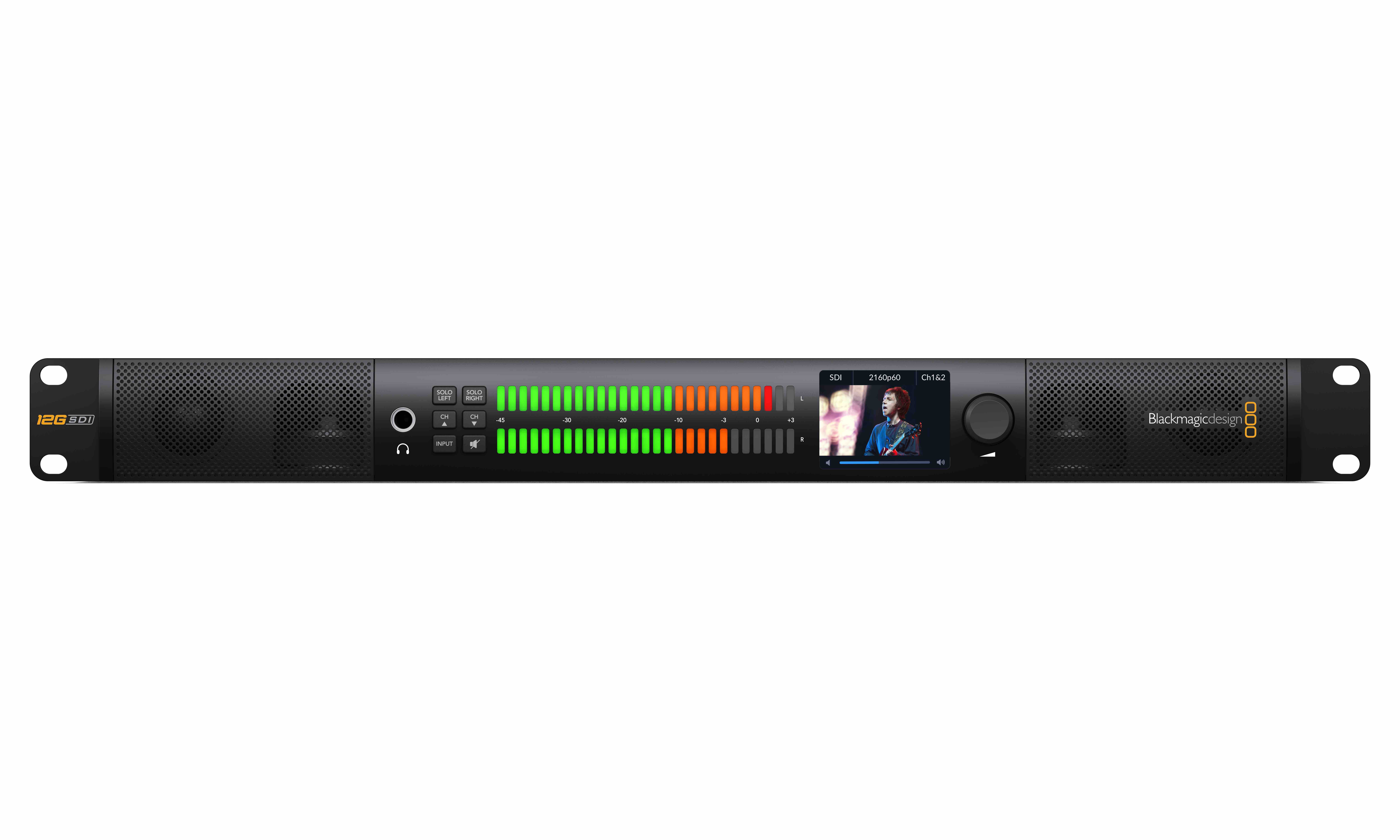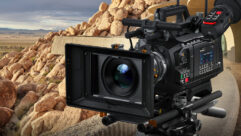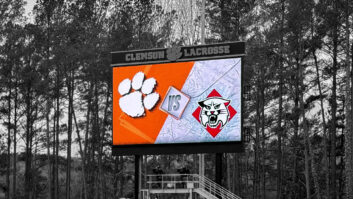On this edition of the SVC Podcast, Contributing Editor Bennett Liles continues his conversation with Ricky Perinchief of Proton Global Media Group about the recent video upgrades for NOW Church in Ocala, Florida featuring cameras and video transmission gear from Blackmagic Design. Ricky outlines the use of the Micro Studio Camera 4K units, the Smart Videohub 20×20 for signal routing and the Unity intercom system.
Links of Interest:
· The DJI Ronin 3-axis camera stabilization device
· The Paralinx Ace wireless video transmission system
· Unity intercom used by the production team at NOW Church
· ATEM 4 M/E Broadcast Studio 4K
This is the SVC Podcast from Sound & Video Contractor with Ricky Perinchief of Proton Global Media Group. Show notes and product links for all of the SVC podcasts are at svconline.com. Go to the top of the page and click Podcasts.
The NOW Church in Ocala, Florida really moves and they manage to have a worship style that spans generations. They get the signal out to the world using Blackmagic Designs video cameras, control and transmission gear. Ricky Perinchief of Proton Global Media Group set it all up and he’s back this week to tell us more about it so stay tuned.
Ricky, good having you back this week from the Proton Global Media Group down in Ocala to talk more about the creative way that the NOW Church there has assembled their Blackmagic gear to cover their services and other events. You’ve set it up so that it’s not only easy to operate but also to move around.
Absolutely.
Among that gear are some wireless video transmitters that you use to get the video from the cameras back to the switcher.
That’s right. We have a Teradek Bolt that we use for our wireless DGI Ronin and then we also have a Paralinx Ace that we use as well for the track camera that brings the signal wirelessly. Both of those are via SDI. [Timestamp: 1:26]

I’m sure that comes in very handy in allowing the people and the gear to move around more freely and better suit their more mobile style.
Absolutely. You know, I think especially with the DGI Ronin and the track both being wireless it gives us that broadcast look that I think is maybe missing in some churches. Because I think the downside to the Facebook Live and having churches be able to broadcast their services very easily is a lot of them might not think of the broadcast style of what goes in the production and how to keep people interested and how to utilize some broadcast angles and broadcast tips and tricks to be able to make things looks very well done and look excellent. So we take those angles and different things where just having that DGI Ronin gives us that steady cam type of look that you see on The Voice and American Idol and those award shows and all those concerts you see, and it really gives us something that’s very simple, very affordable, and yet very easy to operate at the same time. [Timestamp: 2:23]
Now you have more than just the Sunday services going on there. Sometimes the control room doubles as a recording studio.
[Chuckles] Yes.

So you’ve got be able to pick up everything and move it around.
We do, which is another great thing for the Blackmagic ecosystem is the new ATEM 1 M/E Advanced Panel has been something that’s been awesome because it’s a PoE device so it has power over Ethernet to work. Literally, we have the racks on one side of the building and it’s in like an electromechanical room, and then we run one Ethernet cable that goes to our control room and that literally just powers that advanced panel switcher and we’ve able to basically control everything from there even though it’s quite a bit away from the entire rack. And so it keeps the control room quiet and not as hot as most control rooms are, if you have the racks, of course, in there, which a lot of churches do. And then the other thing is we were very stretched for space and NOW Church, we really utilize every square inch we have; just growing and bursting at the seams. So the control room is a very small space and in order to pull off what we do during the week, it’s actually our recording studio for ProTools. So our worship pastor is in there and our engineers are in there mixing things and writing music and laying out different tracks and stuff. And so what we do is we unplug that advance panel – all we do is unplug that one Ethernet cable, and then just stick that in a cabinet for the rest of the week until Sunday comes along and we need to bring it out. And then also with the URSA Broadcast and even the URSA Mini Pro that we have, just being able to take that thing out where Sundays it’s our studio camera and it has all the studio controls that we want – the zoom and focus and things – but then during the week we can take that out and shoot different commercials or interviews or openers or music videos or anything like that that our church has. We can basically produce that via the same cameras and the same equipment because they all work outside the studio as well, just with different adapters. Of course the URSA Mini Pro, we have the EF adaptor we can stick our nice EF cine lenses on there. And then with our B4 stuff it goes on even outdoors and looks great even in outdoor lighting as well, so with the ND filters it has. [Timestamp: 4:29]
Maintaining versatility in getting the signal in, you’ve also got a number of places you have to route the live video to and for that I think you were using the Smart Videohub 20×20.
That’s right. So the Blackmagic cameras, of course, all require a return feed so all of our return feeds are fed from that Smart Videohub to all the Blackmagic cameras. And then the rest of those outputs actually go around to the campus, so they deliver video to the pastor’s study, to the sound booth television monitor, the nursery, the lobby, all those different places where we have the signals. And we just use SDI wiring from that Videohub and drop it right at the television end point and then we just use the new Blackmagic micro converters. SDI to HDMI micro converters are just a great and cost effective way; so I think for 40 bucks or so we can get that signal back down to HDMI and really have everything controlled via the Videohub’s iOS app or even the Mac app that we use as well that we can route stuff and even do stuff on the fly. [Timestamp: 5:31]

I’m sure that with your experience you’re as aware as anybody that probably the majority of smaller churches are what I would refer to as “lighting challenged”.
[Chuckles] You’ve got that right.
Yeah, enough light for you to walk in and be able to see everything in person but the cameras don’t function as the human eye does.
Sure.
So what advantage does the URSA Broadcast Professional camera give you in that kind of situation?
Well, I think they learn, like I said last week with the studio cameras and things, the dynamic range on the Blackmagic studio camera wasn’t ideal. So any church who tried to just stick that in their normal work flow and not have the proper lighting, you’d have to gain that camera up and it would be very difficult to get a clear image without having the grain and noise introduced artificially. So having the URSA Broadcast, what they’ve done is even most B4 lenses will go down to F1.7 or so and you can literally open up those irises wide. And you won’t have any softness on the edges because the sensor is a native 2/3-inch B4 sensor. So there’s no softness, no vignetting, as some of the adaptors to the studio cameras had. But then also it looks fantastic in low light because the dynamic range is closer to that of the URSA Mini Pro, which of course is a camera that is quite a bit more expensive than the URSA Broadcast. So what they’ve done is really allowed churches who don’t have maybe adequate broadcast-style lighting where they can open up their iris wide, have full range of that zoom, and be able to film the pastor, film the stage and get all the different shots that they need to around the room. And not be relying on perfect lighting, but something that’s maybe at least doable and at least affordable for churches. [Timestamp: 7:06]
Maybe one of the big challenges there is running the iris wide open in low light and having volunteer camera crew trying to hold focus for IMAG.
Absolutely. IMAG is a big issue. I think having the volunteers to be able to learn something where the ATEM template is loading all the features, it’s loading the white balances, it’s loading all the colors. All the different functions of the camera are being recalled and are basically overriding the manual controls so that way the volunteer can literally just learn the basics and really focus on what’s the proper image? What’s the rule of thirds? Even taking some of those photography-style classes to just learn some of the basics of filmography and videography and photography and just know what looks good. So they can really focus on what they’re doing and what the image looks like and really not have to worry about the technical side of how it’s making it appear that way. Because somebody who’s an integrator or maybe one of the full-time staff members or part-time staff members who has more experience can come in and set that stuff up and then just save it. [Timestamp: 8:06]
And you have the live video and sound coming in so what do you use for recording and playback?
So we use the HyperDecks as well because we, of course, stick with the Blackmagic ecosystem. So the HyperDecks was a great product introduced years back that now over recent years and recent upgrades have integrated well with ATEM switcher and the software. So we can actually control the HyperDecks right from the panel, right from the software well so we can record, we can play back, we can have multiple HyperDecks and things and they’re all timecoded and everything and they all kind of talk to each other. So I think that’s the beauty, really, once again of the Blackmagic kind of design is where they’ve been able to really make it easy for volunteers and that’s something where when you don’t have to leave that control room seat and you can sit there and be confident and you can see the timecode running, see the record light going on the software and make sure those HyperDecks are going, you can feel confident to know that not only are you doing what you should be doing live, but it’s being recorded properly. And I think even with the new HyperDeck Studio Mini has been really a very cost-effective product that relies on SD cards and SD media, which has come leaps and bounds and has a lot of different sizes and even some larger gigabyte-type products on those SD cards. You can really fit a lot of stuff on there, especially even ProRes and ProRes 422 and 422LT. Pretty much 422LT is our kind of go to for churches at this point because it’s great resolution and it looks good, and it’s compressed in a decent way where it’s not going to take up a huge amount of space. So yeah, we really rely on those HyperDecks heavily and not only for us to record our program output, but also, of course, having the broadcast background that we do, to record a clean feed version as well on a HyperDeck. So we can go back and gather B roll and gather things for commercials or our other types of marketing things where we can take some great shots or some of the cool highlights of the day or whatever and we can kind of archive those and log those into B roll. And then the entire master is basically wiped out a reused. [Timestamp: 10:05]

We’ve touched on this but with the extensive experience you’re the one who has to come in and set everything up so that it’s easy to operate but what do you consider to be the most important aspect to selecting and installing video and sound equipment so that it can easily be operated by volunteer tech crews?
Well, I think that we’ve got to make sure that the volunteers can be confident and feel like they’re accomplishing something. And I think that in years past maybe we’ve had to look for somebody who is a little more technical, especially in running cameras and running the switcher and things. And nowadays, gosh, even audio and lighting there’s so many things. You can kind of go the whole gamut of technology. But where things are headed and where things are right now with the ability to save templates and to have stuff programmed and preprogrammed, I think a lot of it goes back to the fact of you can then have your volunteers confident in what they do. Whether you’re not putting too much stress on them, you’re not putting too much pressure on them to learn all this crazy stuff. Because a lot of them work full-time jobs and they’re in an industry, a lot of them, totally unrelated to running camera or running sound or running lighting at a church. So they have their own stresses during the week. So to have the ability to have everything kind of preset and pre-done for them just makes it so much easier to say all right, well everything snaps back because we open the template on the switcher so you don’t have to worry about a lot of these controls here. But here’s how you really produce a great image. Here’s what we’re looking for with the rule of thirds. Here’s a tight shot. Here’s a full-body shot. Here’s where your headroom is supposed to be. Here’s how you lead somebody. So I think that has really enabled volunteers to shine and to not have that much of a learning curve that we used to have, and we’re able to integrate more people and keep them happier and keep them less stressed out that they can actually shine at what they do. [Timestamp: 11:49]
And you have to make sure that everybody knows what page they’re on. How does the tech crew communicate during the services?
We use Unity Intercom. So Unity is a product that definitely, over the past couple of years, has grown quite a bit and has gone to different aspects of broadcast with the ESPN X Games and things and the Olympics and stuff that they’ve used it for. It’s just something where it brings affordable wireless communication to churches and to other different genres. We were a Clear-Com house before and we looked at upgrading those Clear-Coms to wireless and it just was cost prohibitive. So by having Unity, which actually is a Mac-based application and server software and that is based off licenses so we can add it and literally the device uses the iOS devices or Android devices. So our team of volunteers, most of them have either an iPhone or an Android so when they come in they just have the software of the Unity app basically installed on their phone and they can basically connect to our Wi-Fi that we have set up for Unity. And they can communicate wirelessly on the different channels because I think it brings, I believe, six different channels of coms. So you can have lighting on one channel. You can have broadcast on another. The parking lot crew or the ushers, the security team might be using some of the other channels of Unity. So really it’s something where it brings affordable wireless communication; even having the ability to have the program monitor and program output so you can hear what’s going on in the service as well. So even if you’re out of the room or maybe you’re at another campus at a church, you can communicate to even that person even on a cellular network. So it’s really cool the way that Unity works. [Timestamp: 13:26]
Looks like you have a good setup for what you’re doing now so what’s next? What kind of tech upgrades do you have planned going on after this?
Well, I think for us, you know, we just recently installed the URSA Broadcast. We have the ATEM 1 M/E Advance Panel, and then we also go the new ATEM 4 M/E switcher. So that was really big video upgrades for us. But we really just try to see what comes up in technology and try to integrate that as soon as we can and as cost-effective as we can, and we kind of phase it in. So with us, we just got one URSA Broadcast right now, but our goal is to phase out some of the older cameras that we have. I think the next one up for replacement is going to be the Micro Studio 4K that we have on the jib. We’d love to make that an URSA Broadcast. So that’s kind of one of our next upgrades. But the Blackmagic work flow, because we can have that thing controlled by the camera control and have all the templates set, every upgrade we get makes it easier and easier for us to be able to just integrate that one product and phase out another. So really, instead of a whole huge upgrade like some churches need to do, we’re able to just kind of upgrade as we can every few months or every year or every couple of years when we have the budget and when products are available for us to make the move. So for us, I think that where we’re headed as a church and also with a lot of our clientele in churches all around the country is to really provide a lot more automation. I think automation really is where things are going even more in the future than they are now. Open Door Church in Greenville, North Carolina, we just opened their new building earlier this year and we did their entire system. And it’s amazing to see what we’ve been able to do there with getting all the different people together and find out okay, what’s going to make your life easier? And we’re able to allow QLab especially to control a lot of those things. They can control lighting, they can control video. Q’s that can control IMAG and control ProPresenter for the screens and things, and even route the Videohub signals and it’s all done via time-of-day triggers or things that are done manually in different triggers and different snapshots. So really, I think that’s where things are headed is to have the ability to even preprogram more so that way things run a little bit more smooth, a little bit more efficient, and I think maybe take some of the headache away from having somebody having to do everything live, everything manually. [Timestamp: 15:40]
The setup you have now should mesh pretty well with what you have planned using the Blackmagic video components. Glad to hear about how you’re doing it there and I know it’s fun to do.
Oh, yes.
Ricky Perinchief with Proton Global Media Group in Ocala and the NOW Church. Way to go, Ricky. You’ve done a great job with this.
Thank you.
Look forward to hearing from you again sometime.
Absolutely. Thanks for allowing me to come on. I’ve really enjoyed my time.
The NOW Church has its act together with Blackmagic video gear and all they have to do is snap in some new pieces to be set for the future. Get back with us next week for another AV tech case study right here on the SVC Podcast.


